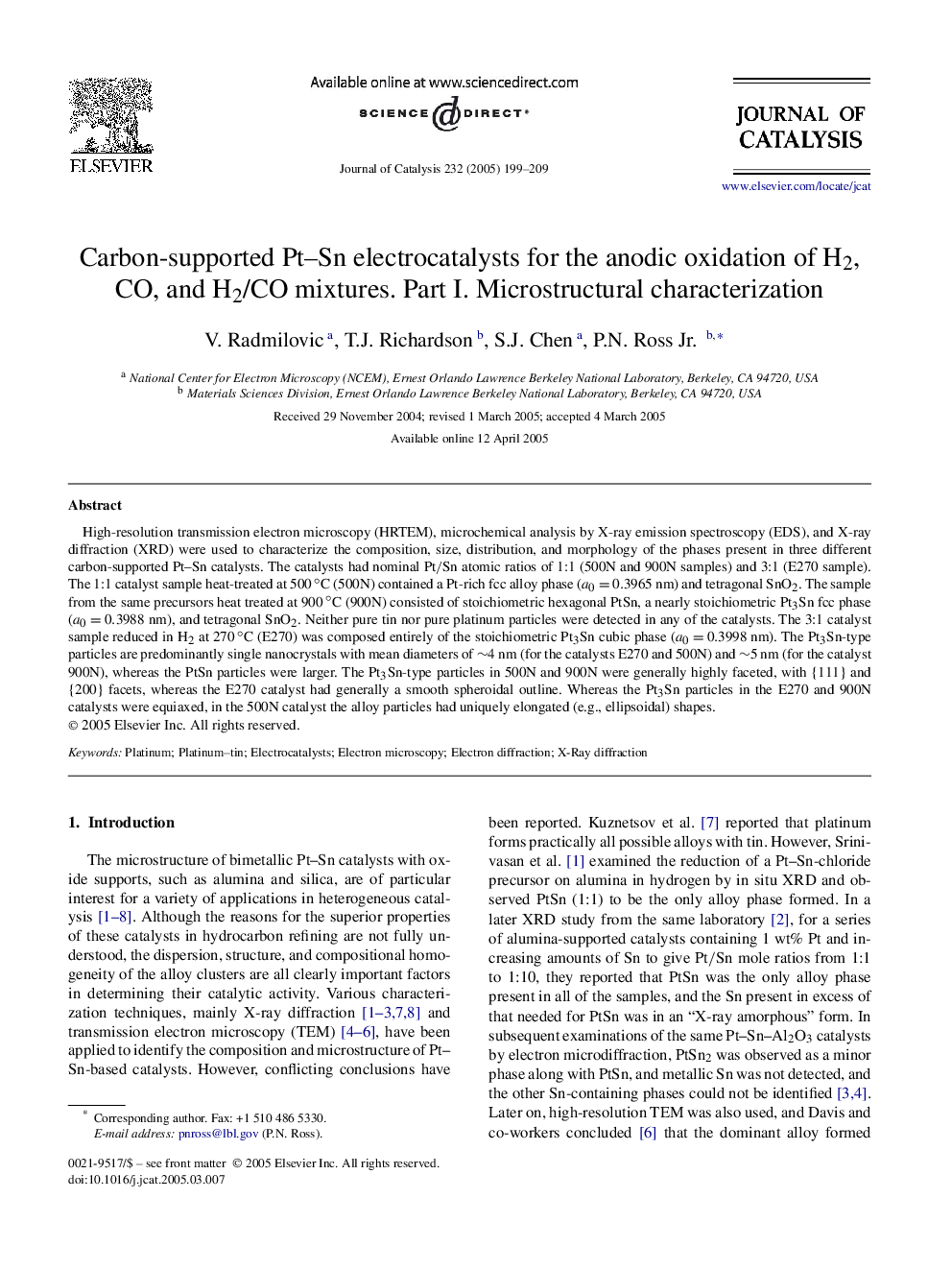| Article ID | Journal | Published Year | Pages | File Type |
|---|---|---|---|---|
| 10244852 | Journal of Catalysis | 2005 | 11 Pages |
Abstract
High-resolution transmission electron microscopy (HRTEM), microchemical analysis by X-ray emission spectroscopy (EDS), and X-ray diffraction (XRD) were used to characterize the composition, size, distribution, and morphology of the phases present in three different carbon-supported Pt-Sn catalysts. The catalysts had nominal Pt/Sn atomic ratios of 1:1 (500N and 900N samples) and 3:1 (E270 sample). The 1:1 catalyst sample heat-treated at 500â°C (500N) contained a Pt-rich fcc alloy phase (a0=0.3965nm) and tetragonal SnO2. The sample from the same precursors heat treated at 900â°C (900N) consisted of stoichiometric hexagonal PtSn, a nearly stoichiometric Pt3Sn fcc phase (a0=0.3988nm), and tetragonal SnO2. Neither pure tin nor pure platinum particles were detected in any of the catalysts. The 3:1 catalyst sample reduced in H2 at 270â°C (E270) was composed entirely of the stoichiometric Pt3Sn cubic phase (a0=0.3998nm). The Pt3Sn-type particles are predominantly single nanocrystals with mean diameters of â¼4nm (for the catalysts E270 and 500N) and â¼5nm (for the catalyst 900N), whereas the PtSn particles were larger. The Pt3Sn-type particles in 500N and 900N were generally highly faceted, with {111} and {200} facets, whereas the E270 catalyst had generally a smooth spheroidal outline. Whereas the Pt3Sn particles in the E270 and 900N catalysts were equiaxed, in the 500N catalyst the alloy particles had uniquely elongated (e.g., ellipsoidal) shapes.
Related Topics
Physical Sciences and Engineering
Chemical Engineering
Catalysis
Authors
V. Radmilovic, T.J. Richardson, S.J. Chen, P.N. Jr.,
